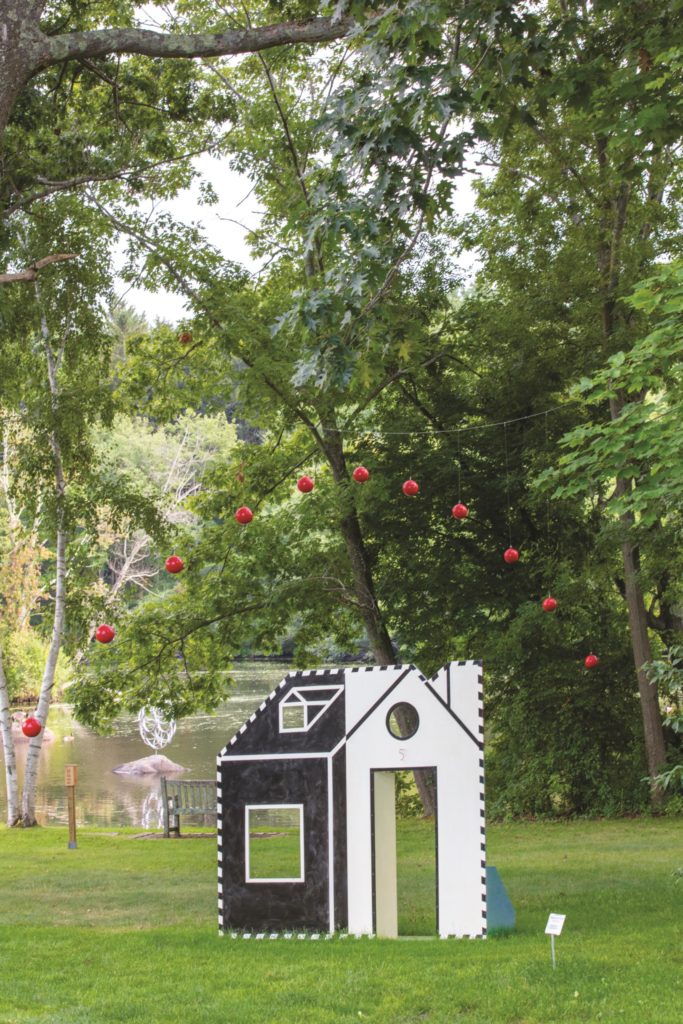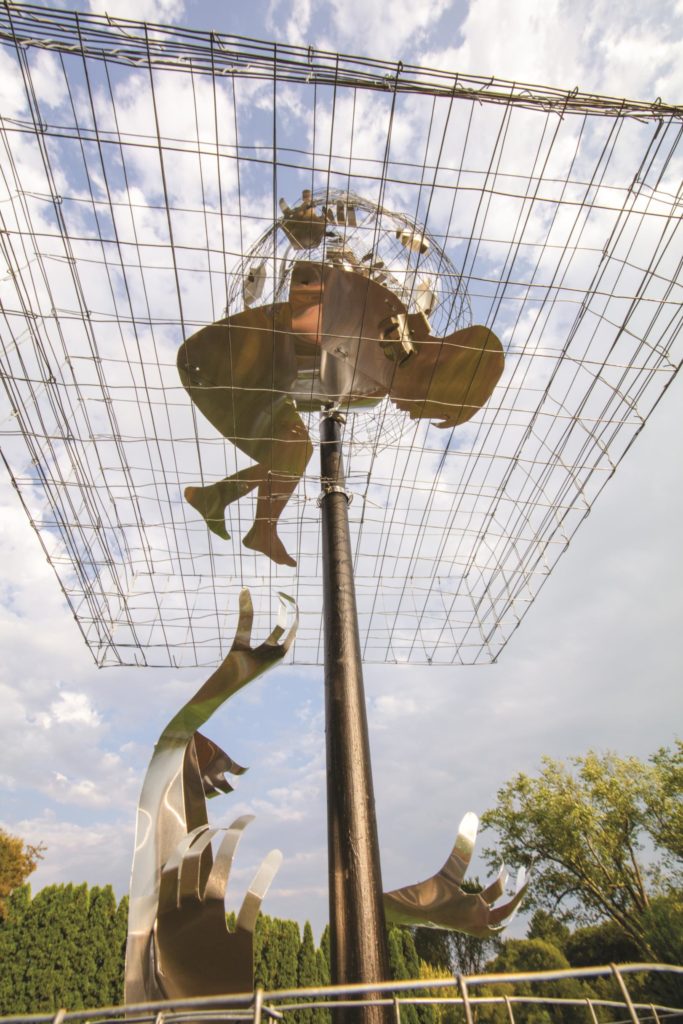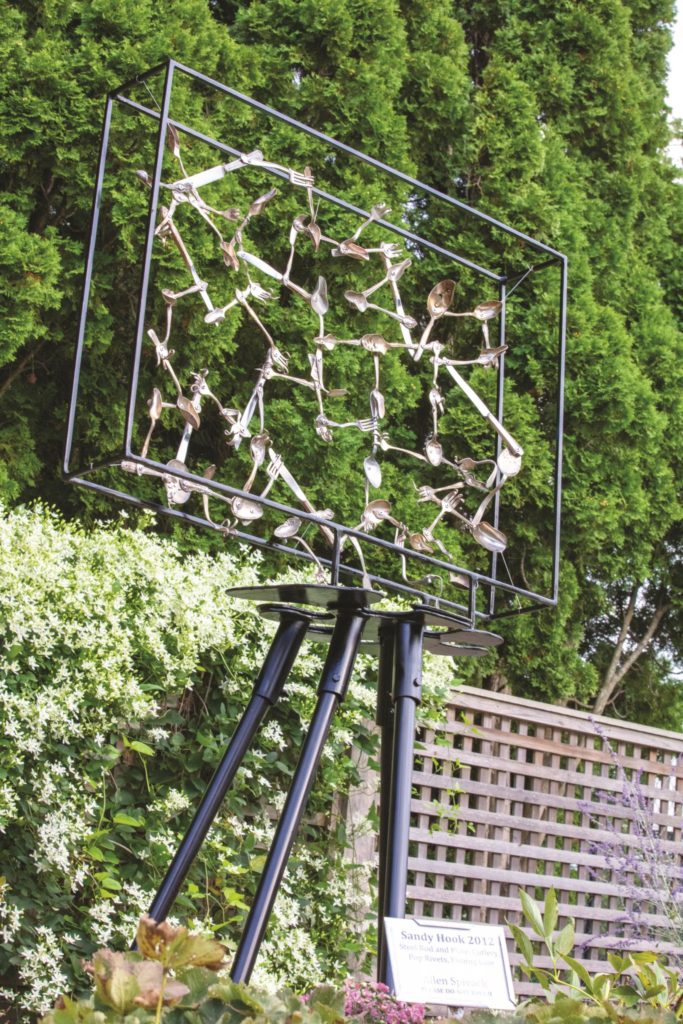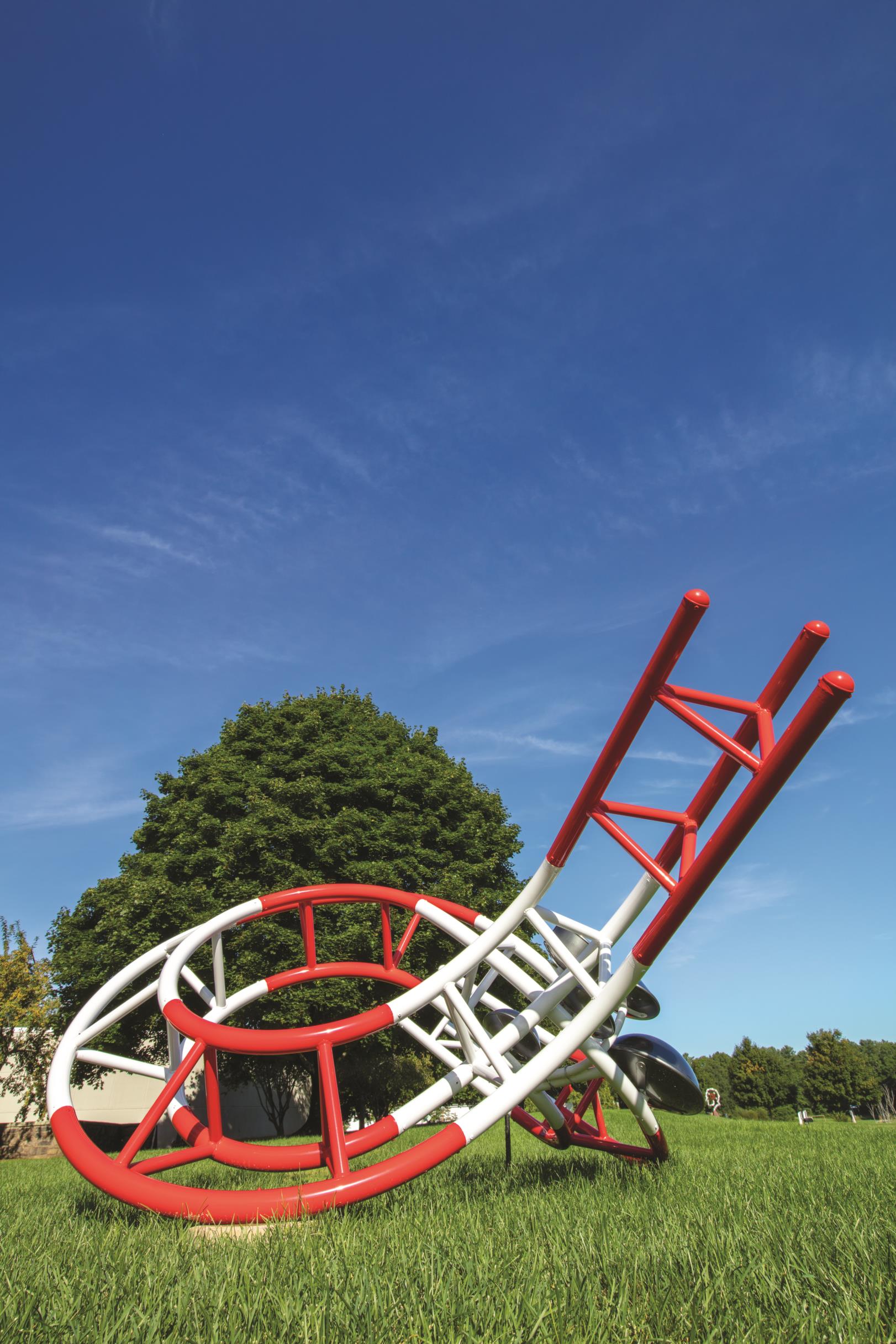It can be a joy to get lost in art and experience the sensation of being transported from the ordinary world into one one of creative beauty. But some of the most powerful art pieces offer an element of social consciousness mingled with the emotional charge of beautiful art.
The 10th annual Flying Horse Outdoor Sculpture Exhibit, which is being held on the lush grounds of Pingree School in South Hamilton with free admission, includes more than 50 sculptures. Among them are three pieces that provoke thought about social issues and current events—specifically, the shooting at Sandy Hook Elementary School in Connecticut, climate change, and immigration. The pieces are rendered by professional sculptors in a variety of materials, including steel, barbed wire, plywood, and a jumble of everyday items.


Yarrow Thorne, this year’s honorary chair, is the founder and director of The Avenue Concept, a public art program in Providence. Thorne, a longtime supporter of public art, is embracing the Pingree School’s milestone 10th outdoor exhibit. “I applaud all efforts to make art accessible to everyone in the community,” Thorne says. The free sculpture exhibit at Pingree is open during daylight hours seven days a week. Schoolchildren are always welcome and a tour is available.
Judith Klein, curator and founder of the Flying Horse exhibit, clarifies that the school is not endorsing a political point of view but providing an opportunity for discussion about important issues. “We encourage the presentation of ideas that provoke thought and discussion,” Klein says. “Art is the perfect opportunity to confront and consider ideas from a variety of sources and viewpoints.”
There also are six tribal posts from Africa that ask the question, What constitutes art? The wooden posts, carved in the 19th and 20th centuries for utilitarian or spiritual purposes, are provided by Tim Hamill of Newton, who operates the Hamill Gallery of Tribal Art, an online gallery.
Sandy Hook 2012 is the work of Allen Spivack of Jamaica Plain, a self-taught sculptor who was mentored by renowned sculptor David Stromeyer. Composed of steel rod and plate, deformed silver-plated cutlery, pop rivets, and fishing line, the sculpture is large, almost 6 feet tall. The artwork, Spivack says, embodies the concept of “legacy objects”—things that are passed down through families—but also includes the weight of tragedy that the school shooting evokes. “The deformed and distorted cutlery carries the weight of this destruction,” Spivack says. “Eating utensils cease to be functional items, their exquisite craftsmanship defiled.”

Mark Wholey, a sculptor from Warren, Rhode Island, who has apprenticed in Padova, Italy, and exhibited in several museums in Europe, relays an alert about the earth in House and Home, a three-dimensional piece that incorporates the earth’s elements.
Ramani Rangan of Gloucester, creator of “Kidnapped at the Border,” grew up in post-World War II London and is still haunted by images of what he saw in those dark times as a small child, including a gang of children. “Looking back over the years, I have seen many lost children without parents, abandoned or taken from their homes,” Rangan says. “This sculpture is for the children taken from their parents at the border, but also for all our children throughout the world who are suffering.” After attending classes by sculptor Kurt Harald Isenstein in Copenhagen, his work has been shown in many venues and countries over the past 45 years.
For more information, contact 978-468-4115 or visit pingree.org/sculpture-show.

